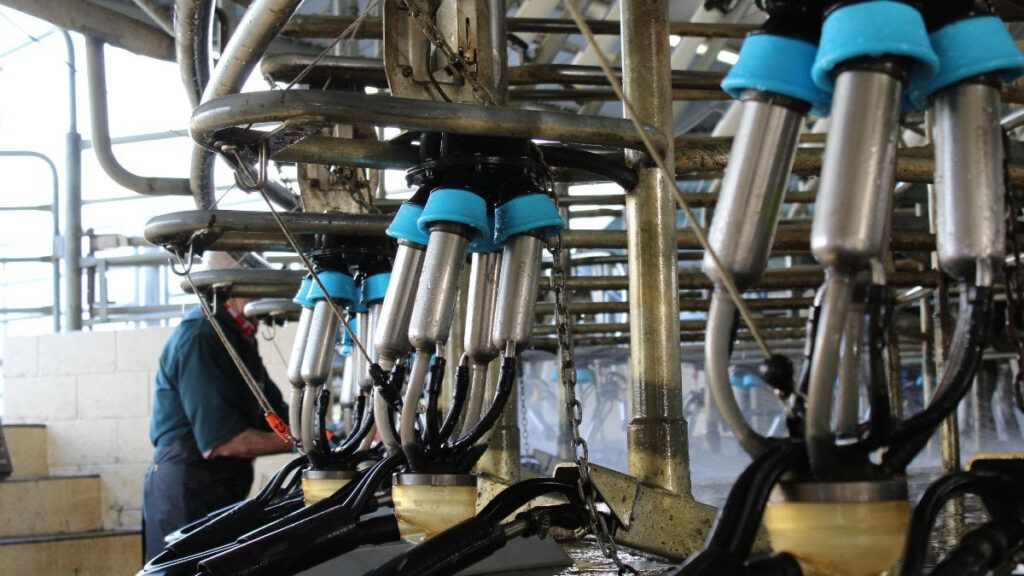What an interesting year 2021 has been for dairy commodity prices, however, we’re at a point where lofty prices start to spook people. Some people are starting to compare this season to the last time dairy commodity prices saw these heights; the 2013-14 season.
At that time, the market was very different, and that season’s high farmgate milk price was followed by a crash in the price the following season. So, let’s look back at 2021’s dairy commodity price movements, and then discuss why it is unlikely that we will see the same boom and bust of the 2013-14 season.
At the start of 2021 dairy commodity prices hit dizzying heights, in March whole milk powder hit a magical US$4364/tonne at the March 16 Global Dairy Trade (GDT) event. Butter was the only other key commodity offered on the GDT platform that was able to achieve a similar gain at the same auction, while the other key reference products did not manage such a dazzling price gain.
At that time, Asian buyers were keen to secure much-needed WMP and butter supplies on the way into the winter lull of production. Then, as with now, shipping disruptions were a major issue on the top of mind of all buyers, making New Zealand’s ability to get product to market very attractive.
This was the first high point of 2021, but it didn’t take long for both WMP and butter prices to settle down to land in a new price range as NZ was heading into winter, and peak milk was flowing in the Northern Hemisphere.
Over the second half of 2021, the market changed tack remarkably, with a significant shift towards protein, with less concern for WMP. As the perfect example, the NZX casein price has increased 50% from the start of 2021, currently sitting at US$12,900/t. This casein price is an amalgamation of all casein and caseinate prices, so it is best to take with a grain of salt, but the premise remains, the market is chasing these protein products, with buyers willing to push prices ever higher to secure supply. These buyers are also not from our regular markets, with the majority of these products heading to the United States.
Cheese prices have followed similar trends to casein, but more impressively, exploding over the last two months. Cheese prices at the end of 2021 are 29% higher than where they started the year. And, in an almost unheard of trend in the world of commodity trading, the complementary product of cheese production is also in hot demand, whey.
Whey prices are being pushed to levels that have some in the industry in disbelief. With two of the world’s biggest cheese producers, the US and the European Union, struggling to grow their milk production, in year-on-year terms, there seems little doubt that cheese, and therefore whey, will be in tight supply going forward. NZ cheese prices are the most expensive globally, but buyers, such as Japan, are still willing to pay these high prices to secure their much-needed supply of NZ cheese. China’s demand for whey is unlikely to diminish in the short term.
Like the proteins, the ever-tasty part of the dairy industry, the cream group, has been on a steady climb higher through 2021. As mentioned earlier, butter prices exploded higher in March, but trended lower through winter, before shifting steadily higher.
Anhydrous milk fat (AMF) prices didn’t peak in March quite like butter prices, but did trend slightly lower in winter, before marching ever higher over the second half of 2021. Together, butter and AMF prices are now at seven-year highs. Demand for both products is very steady and is being helped by the real lack of exports coming out of the EU and US. During the 2013-14 season, the cream group didn’t see any real value gains, compared to the boom WMP and SMP prices managed.
So, how is this different to the 2013-14 season? Well, in 2013-14 there was a major shortage of WMP in China, so the Chinese government encouraged importers to reinstate their inventories, and thus the rush of demand for WMP… This time around, as mentioned above, the dynamics are very different.
Proteins are in the driving seat, with strong global demand for an array of milk protein products. The cream group has formed a solid price base, due to demand for protein products. Processing of these products moves milk away from production of cream derived products; tightening milkfat supply globally. Adding to these factors, the outlook for WMP looks very solid, with stream return calculations also likely seeing excess milk flowing away from WMP driers, into other processes, further tightening the global supply of milk for WMP.
Looking forward, we’re seeing a global market that is unlikely to fulfill its requirements in the short term, as milk production remains tight, and likely to get tighter over the short term.
Shipping remains another key issue buyers are willing to pay a premium for, as global shipping remains very disrupted. Only when these two market factors return to balance, will it be likely to see downward pressures return for the NZ farmgate milk price. However, from what we’ve seen over the last year, it’s not going to be a fast turnaround.










